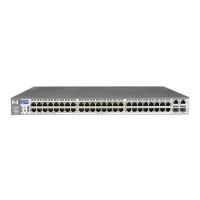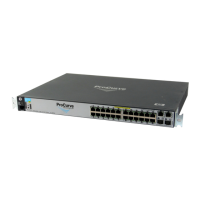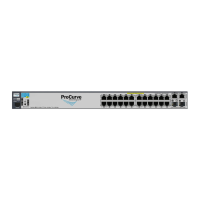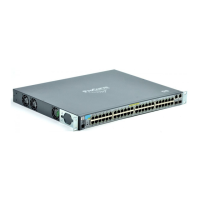13-7
802.1w Rapid Spanning Tree Protocol (RSTP) and 802.1d Spanning Tree Protocol (STP)
Configuring Rapid Reconfiguration Spanning Tree (RSTP)
Configuring Rapid Reconfiguration
Spanning Tree (RSTP)
This section describes the operation of the IEEE 802.1w Rapid Spanning Tree
Protocol (RSTP)
Overview
As indicated in the manual, the spanning tree protocol is used to ensure that
only one active path at a time exists between any two end nodes in the network
in which your switch is installed. Multiple paths cause a loop in the network
over which broadcast and multicast messages are repeated continuously,
which floods the network with traffic creating a broadcast storm.
In networks where there is more than one physical path between any two
nodes, enabling spanning tree ensures a single active path between two such
nodes by selecting the one most efficient path and blocking the other redun-
dant paths. If a switch or bridge in the path becomes disabled, spanning tree
activates the necessary blocked segments to create the next most efficient
path.
RSTP Feature Default Menu CLI Web
Viewing the RSTP/STP configuration n/a page 13-16 page 13-10 n/a
enable/disable RSTP/STP
(RSTP is selected as the default protocol)
disabled page 13-16 page 13-11 page 13-18
reconfiguring whole-switch values Protocol Version: RSTP page 13-16 page 13-12 n/a
Force Version: RSTP-operation
Switch Priority: 8
Hello Time: 2 s
Max Age: 20 s
Forward Delay: 15 s
reconfiguring per-port values Path Cost: depends on port
type
page 13-16 page 13-14 n/a
Priority: 8
Edge Port: Yes
Point-to-point: Force-true
MCheck: Yes
!Software.book Page 7 Thursday, October 10, 2002 6:10 PM

